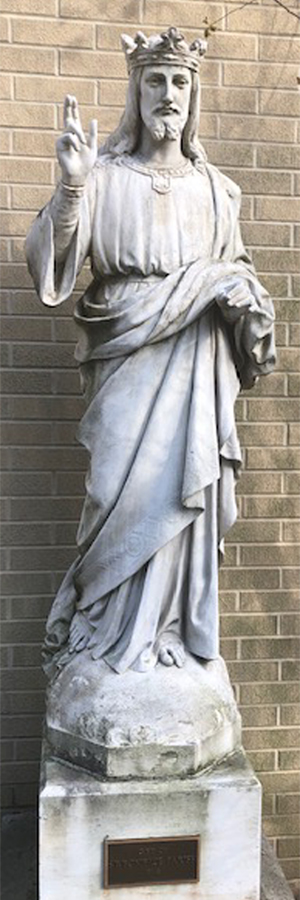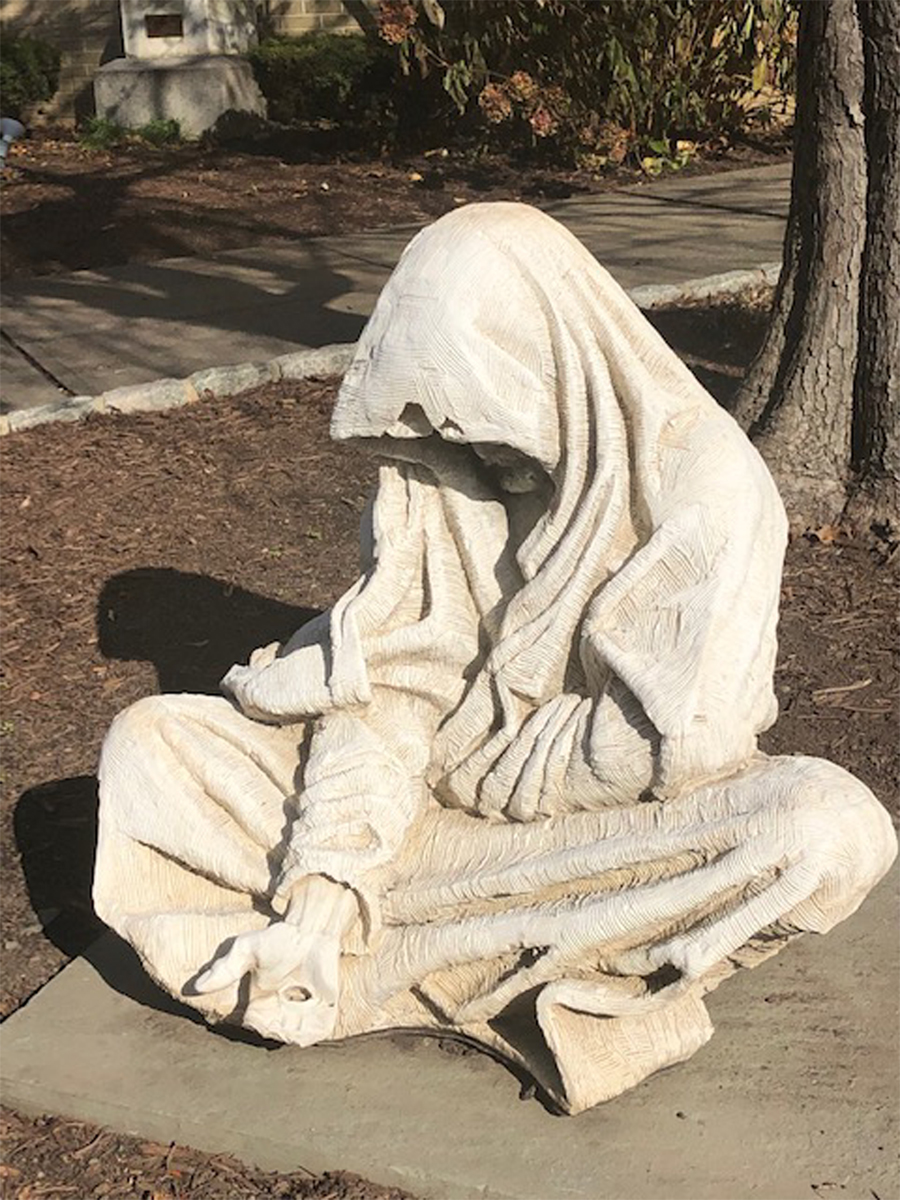Sermon on Christ the King: How should we imitate Christ's kingship?
 |
Here we are again at the feast day of Christ the King. I complain about it every time it comes up. First, it is not listed as a feast day in the Book of Common Prayer. But the desire of Christ is love. We are to love God and love one another. And the way to go about Christian love is not power, but grace, namely the divine gift of mercy and charity. At the college I teach at, King’s College, there are two images of Christ that always strike me as deeply contradictory. They are both be what until recently was the chapel. One is, obviously, Christ the King: here he is as a statue. Its a typically medieval image of a long-haired and bearded Jesus. He is offering a blessing, but his crown and fancy clothing are symbols of kings of power. The other image, below, is this one of a begger asking for a donation. I think Jesus and Paul used the language of monarchy because that is what people understood centuries ago. And a key message of faith is that some people will be included among the righteous and others will not—and a king has the power of life and death to make such decisions. Yet another image is Ezekial’s of the shepherd, but his shepherd condemns the fat and strong sheep, which you would think taste better as lamp chops or produce finer wool. Instead, it is the lean, the lost, the weak sheep that matter. The one’s our society would typically let go to waste, cull, and kill. |
Jesus also uses the shepherd image, but contrasts it with goatherd, condemning the poor goats--I’m not sure why? What did the goats do that was so wrong?
Today, I think, we should use the language of citizenship—since that is how we run societies today. And as citizens we have many rights, but also responsibilities for which we share mutual responsibility, also sort of like the parishioners in a church. Among those responsibilities should be looking after our fellow citizens in need. Yes, we can be proud of some of that work we do here in this parish.
And there is always more to be done, with this church, and in our nation, and around the world. Especially in these times when it seems to be more and more people embrace selfishness as a virtue and fear generosity as a threat. Remember instead that these words of Jesus are those to live by: “Come, you that are blessed by my Father, inherit the kingdom prepared for you from the foundation of the world; Truly I tell you, just as you did it to one of the least [persons] who are members of my family [which actually includes everyone], you did it to me.” |  |
Written for the parish of St. James & St. George 2020 November 22
URL: <http://therev.brianpavlac.org/srms/20201122.html